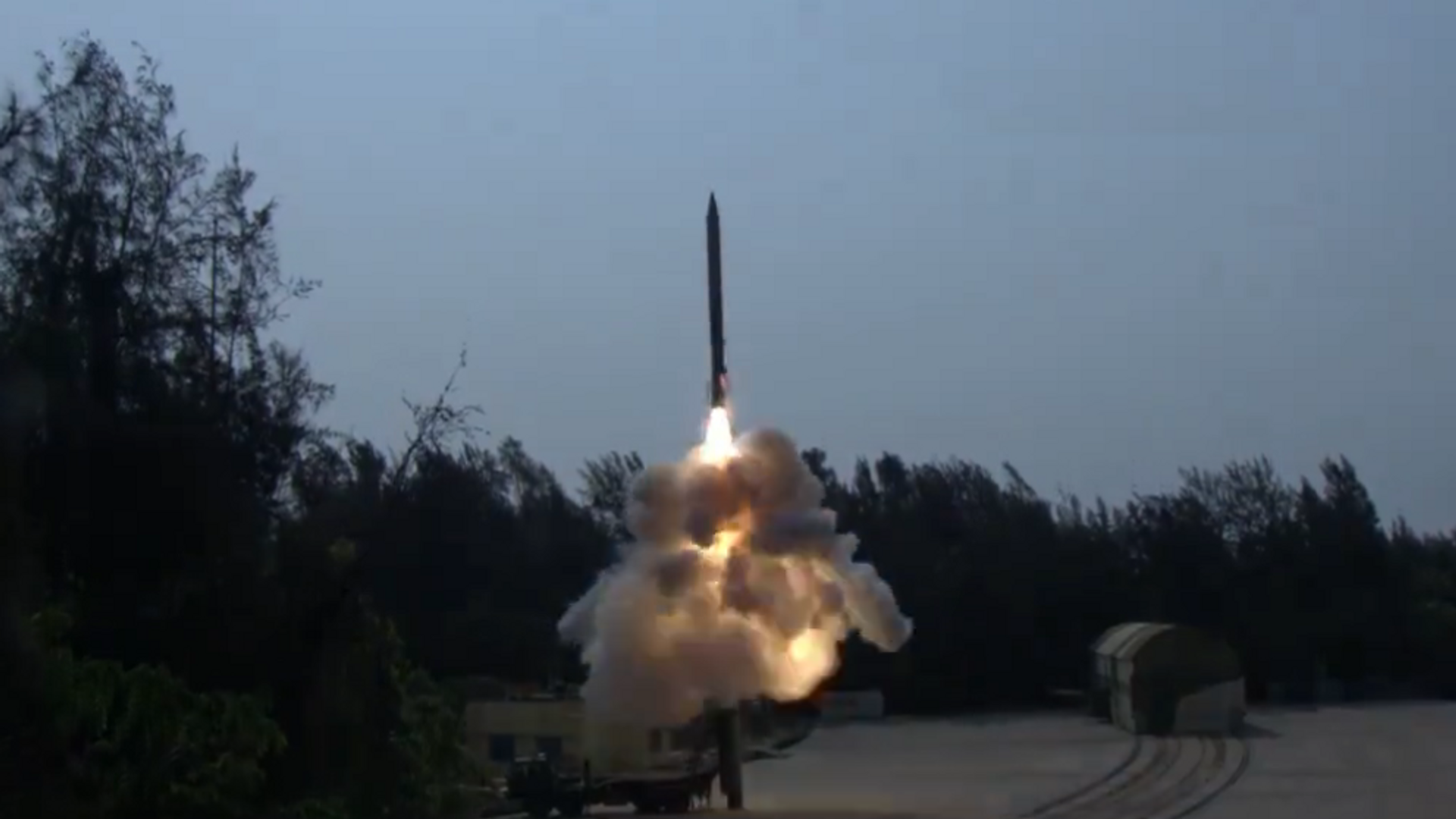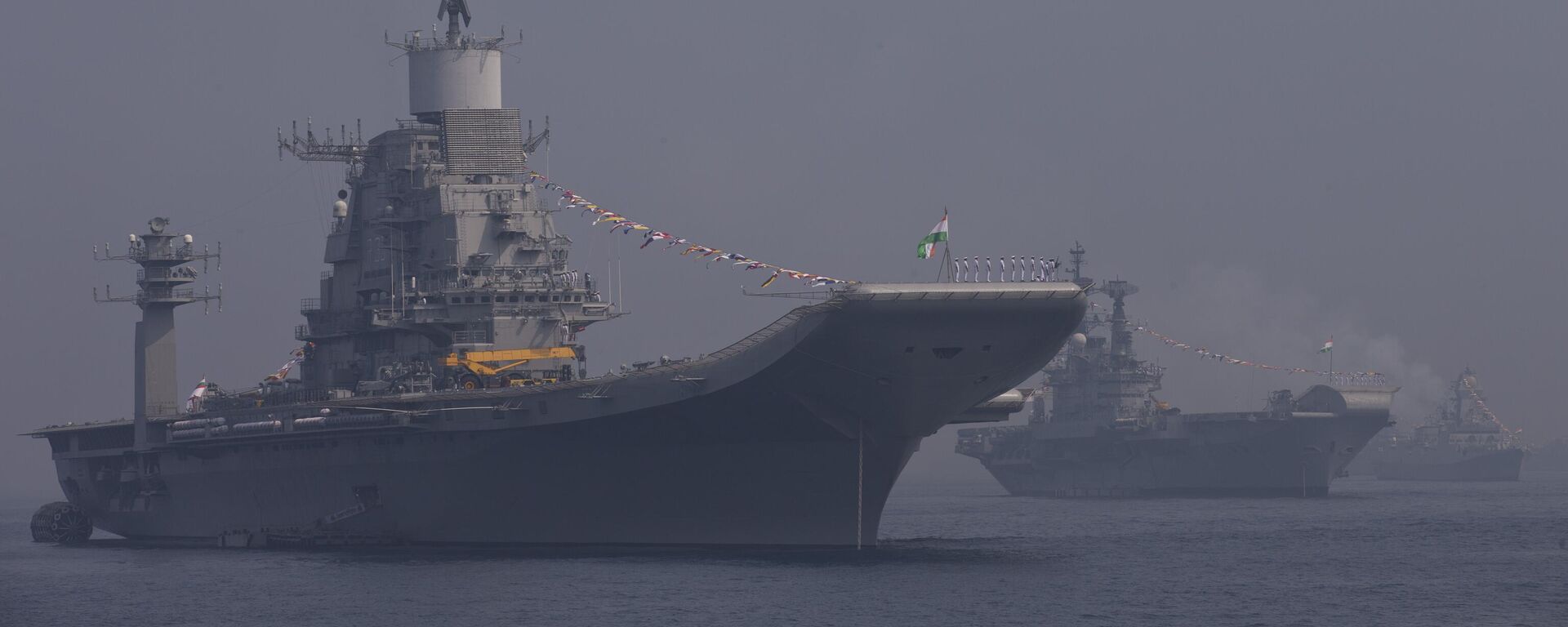https://sputniknews.in/20240502/indias-smart-torpedo-release-system-set-to-change-military-dynamics-in-ior-7274352.html
India's SMART Torpedo Release System Set to Change Military Dynamics in IOR
India's SMART Torpedo Release System Set to Change Military Dynamics in IOR
Sputnik India
India's Missile-Assisted Torpedo Release System, better known as SMART is a pathbreaker, and boosts the Indian Navy's firepower manifold, two naval veterans have said.
2024-05-02T18:59+0530
2024-05-02T18:59+0530
2024-05-02T18:59+0530
sputnik opinion
india
odisha
pakistan
indian navy
china
indian ocean
arabian sea
bay of bengal
beijing
https://cdn1.img.sputniknews.in/img/07e8/05/01/7262077_62:0:1054:558_1920x0_80_0_0_8833ed478cc674b7f2bb4673d8b8b653.png
India's Missile-Assisted Torpedo Release System, better known as SMART is a pathbreaker, and boosts the Indian Navy's firepower manifold, two naval veterans have said.Earlier this week, India successfully conducted the test of a Supersonic Missile-Assisted Release of Torpedo (SMART) system off the coast of Odisha, marking a significant milestone in the world's largest democratic state's anti-submarine warfare capabilities.Considerable Jump in Indian Navy‘s Firepower"This canister-based missile system consists of several advanced sub-systems, namely two-stage solid propulsion system, electromechanical actuator system, precision inertial navigation system etc. The system carries advanced light-weight torpedo as payload along with parachute-based release system," it added.According to Commodore (retired) Seshadri Vasan, this is a piece of encouraging news because the tests of the SMART system have been going on for the last 4-5 years.He stressed that this kind of military platform, which is virtually a standoff weapon - means one doesn't have to be very close to the enemy submarine.Once an enemy submarine is detected through an airborne sensor, a surface vessel, or an Indian sub, the Navy would be able to send the SMART supersonic missile with a payload to destroy it, Vasan explained.Regional Dynamics in IORThe defense expert noted that the significance of this development could be understood in light of the increased presence of Pakistan in the Indian Ocean Region (IOR). Recent reports from Islamabad suggest that eight submarines built with Beijing's assistance will be soon delivered to the Islamic state which means that the underwater situation and challenges both in the Bay of Bengal and the Arabian Sea will be even more intense.Boost for India’s Force Projection PowerMeanwhile, another former Indian Navy officer, Captain (Retd) Sarabjeet S Parmar mentioned that the SMART system is part of the Indian Navy's hard power.He observed that one of the most complex operations that any Navy faces is anti-submarine warfare. Because the environment is underwater, dictated by the science of sound and therefore it becomes more complex.Parmar said that the submarine's main attribute is its ability to remain undetected. The moment a submarine is detected, then maximum firepower is used on it. As of now, India has the standard anti-submarine rockets and standard torpedoes.When torpedoes are launched from a ship, they have a certain range, and when they are launched from an aircraft, that range gets further extended. In this case, instead of using an aircraft, the SMART system is using a missile.
https://sputniknews.in/20240430/what-navys-plan-to-achieve-100-percent-self-reliance-in-warship-making-means-for-india-7255955.html
india
odisha
pakistan
china
indian ocean
arabian sea
bay of bengal
beijing
delhi
new delhi
islamabad
Sputnik India
feedback.hindi@sputniknews.com
+74956456601
MIA „Rossiya Segodnya“
2024
Pawan Atri
https://cdn1.img.sputniknews.in/img/07e6/0c/13/139630_147:0:831:684_100x100_80_0_0_8fa2b25903e7787fe6a2698552c167df.png
Pawan Atri
https://cdn1.img.sputniknews.in/img/07e6/0c/13/139630_147:0:831:684_100x100_80_0_0_8fa2b25903e7787fe6a2698552c167df.png
News
en_IN
Sputnik India
feedback.hindi@sputniknews.com
+74956456601
MIA „Rossiya Segodnya“
Sputnik India
feedback.hindi@sputniknews.com
+74956456601
MIA „Rossiya Segodnya“
Pawan Atri
https://cdn1.img.sputniknews.in/img/07e6/0c/13/139630_147:0:831:684_100x100_80_0_0_8fa2b25903e7787fe6a2698552c167df.png
smart, anti-submarine missile system, lightweight torpedo, defence research and development organisation, drdo, anti-submarine warfare, indian navy, indigenously developed torpedo, supersonic missile assisted release of torpedo, smart system, dr apj abdul kalam island, underwater threats, cutting-edge technology, defence innovation, canister-based torpedo, solid-propellant rocket,
smart, anti-submarine missile system, lightweight torpedo, defence research and development organisation, drdo, anti-submarine warfare, indian navy, indigenously developed torpedo, supersonic missile assisted release of torpedo, smart system, dr apj abdul kalam island, underwater threats, cutting-edge technology, defence innovation, canister-based torpedo, solid-propellant rocket,
India's SMART Torpedo Release System Set to Change Military Dynamics in IOR
The Indian Navy is rapidly expanding its arsenal of weapons, and a first-of-a-kind combination of a Missile and a torpedo was successfully flight-tested by the South Asian country on Wednesday. Sputnik India analyzes how the arrival of this new military equipment changes the dynamics in the region.
India's Missile-Assisted Torpedo Release System, better known as SMART is a pathbreaker, and boosts the Indian Navy's firepower manifold, two naval veterans have said.
Earlier this week, India successfully conducted the test of a
Supersonic Missile-Assisted Release of Torpedo (SMART) system off the coast of Odisha, marking a
significant milestone in the world's largest democratic state's anti-submarine warfare capabilities.
Considerable Jump in Indian Navy‘s Firepower
"SMART is a next-generation missile-based light-weight torpedo delivery system, designed and developed by the Defence Research and Development Organisation (DRDO) to enhance the anti-submarine warfare capability of the Indian Navy far beyond the conventional range of lightweight torpedo," the Ministry of Defense said in a statement.
"This canister-based missile system consists of several advanced sub-systems, namely two-stage solid propulsion system, electromechanical actuator system, precision inertial navigation system etc. The system carries advanced light-weight torpedo as payload along with parachute-based release system," it added.
According to Commodore (retired) Seshadri Vasan, this is a piece of encouraging news because the tests of the SMART system have been going on for the last 4-5 years.
He stressed that this kind of military platform, which is virtually a standoff weapon - means one
doesn't have to be very close to the enemy submarine.
Once an enemy submarine is detected through an airborne sensor, a surface vessel, or an Indian sub, the Navy would be able to send the SMART supersonic missile with a payload to destroy it, Vasan explained.
"Basically, this would travel in an autonomous mode, based on the target indication before dropping the torpedo close to the adversary's submarine. Thereafter, the underwater vessel belonging to the rival nation will find it extremely difficult to overcome the threat from the torpedo because the reaction time is very limited and the attack is coming from the air. Therefore, the ability to neutralize the underwater threat the SMART system possesses is phenomenal," he told Sputnik India on Thursday.
The defense expert noted that the significance of this development could be understood in light of the increased presence of Pakistan in the
Indian Ocean Region (IOR). Recent reports from Islamabad suggest that eight submarines built with Beijing's assistance will be soon delivered to the Islamic state which means that the underwater
situation and challenges both in the
Bay of Bengal and the
Arabian Sea will be even more intense.
"However, this kind of capability will deter our adversaries in terms of their deployment and their operational plans. The SMART system allows a phenomenal amount of flexibility to the naval commander who can fire these torpedoes from a shore station or a ship or maybe even from an aircraft in the future. That's why, it is a pathbreaker and a force multiplier as far as Indian Navy's capabilities are concerned," Vasan opined.
Boost for India’s Force Projection Power
Meanwhile, another former Indian Navy officer, Captain (Retd) Sarabjeet S Parmar mentioned that the SMART system is part of the Indian Navy's hard power.
"Of course, it is a significant step because it speaks of the technological developments and India's ability to develop such weapons systems which will bolster the force projection power of the country's blue water force," Parmar pointed out in an interaction with Sputnik India.
He observed that one of the most complex operations that any Navy faces is anti-submarine warfare. Because the environment is underwater, dictated by the science of sound and therefore it becomes more complex.
Parmar said that the submarine's main attribute is its ability
to remain undetected. The moment a submarine is detected, then maximum firepower is used on it. As of now, India has the standard anti-submarine rockets and standard torpedoes.
When torpedoes are launched from a ship, they have a certain range, and when they are launched from an aircraft, that range gets further extended. In this case, instead of using an aircraft, the SMART system is using a missile.
"The effectiveness of this SMART system as a weapon will go through various stages of calibration, of testing, it's how best it can be used by the Navy in its operations at the tactical level and the operational level which is going to take some time. But there's no doubt that it is a definitive boost in firepower," Parmar concluded.



